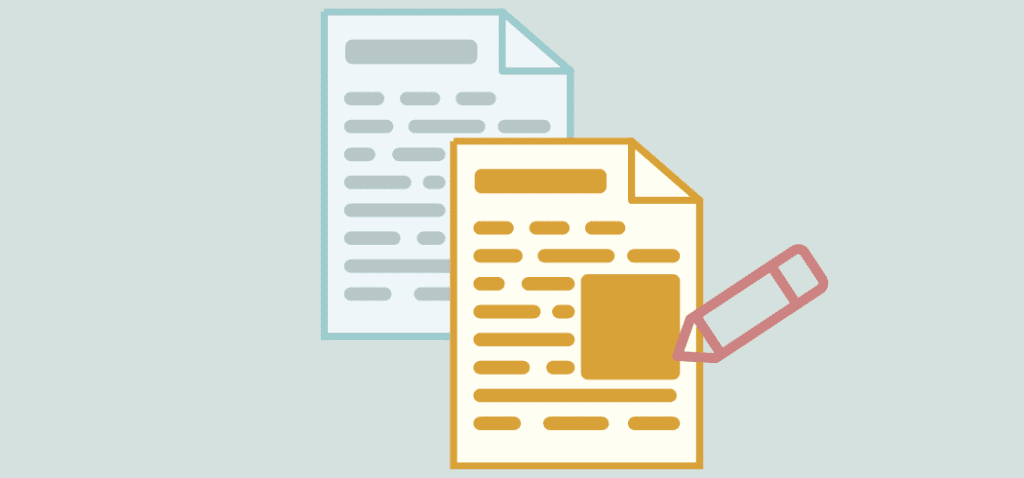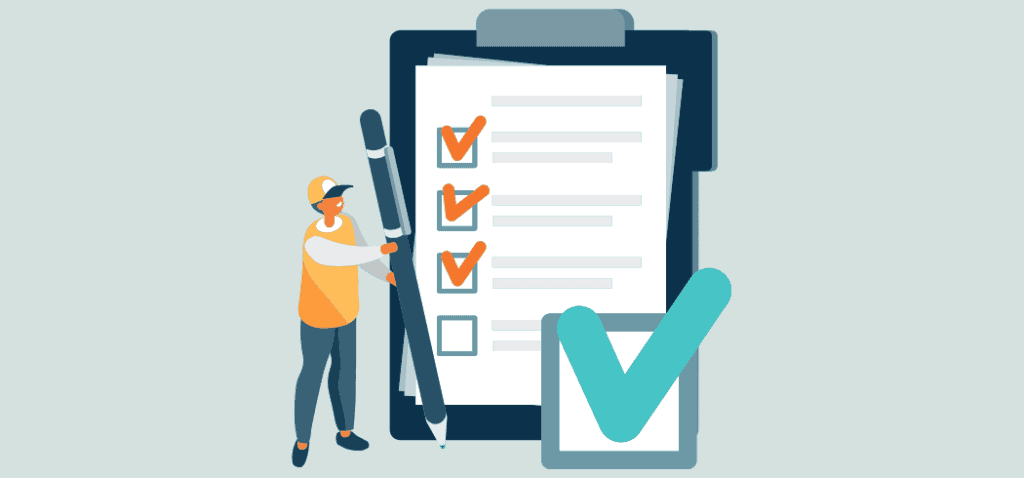One reason behind the difficulty of editing written documents is that it is composed of different stages and levels. One step includes copy editing.
Keep reading to learn the definition of copy editing and its importance. We’ll also cover the different steps to copy editing and the required skills of a copy editor.
Copy Editing Definition

Copy editing, copy-editing, or copyediting is the editing process that involves corrections in spelling, grammar, punctuation, and style of a written piece. Like mechanical editing, copy editing focuses on the minor errors in the written document.
It does not involve heavy or substantive editing where the content editors have to look for the “bigger picture.” You don’t have to search for errors in the arguments, logical structure, or sequence of events when you copyedit.
Aside from looking for typos and misspellings, copy editors also perform editing for grammar. Their editing projects may range from books to research projects and essays. They assess the content for readability while ensuring that the style of writing is consistent.
Copy editors offer suggestions to writers on how they can best convey their message. Sometimes, this level of editing involves correcting factual errors. Other copy editors also provide extra services for bibliography formatting or reference lists.
You’ll find desk editors making copy edits in different publishing houses. They can work in book publishing or digital publishing. Some of them are freelancers who work in the comfort of their homes.
Take your grammar skills to the next level
Take Our Copyediting Course
Importance of Copy Editing
Copy editing is essential for different reasons. Here are some of them.
Improves Accuracy
Among the different levels of editing, the copy editing or copyediting stage helps improve your accuracy the most. Even though they are not experts in these topics, copy editors contribute by reading like laypersons.
You can ask questions to the writer about the content to ensure they produce an error-free publication. Copy editors can also research the topic to fact-check to create a clean text document.
As you can see, copy editing goes beyond making grammatical corrections. They also improve accuracy and prevent ambiguity in your writing.
Accelerates Publishing
Copy editing different documents increases their chances of publication. When you submit your manuscript to the publishing house following their house style guide, design, and other standards, you get a leg up on your competitors.
It’s the little things that make publication easier. For example, the publishers will only focus on the content if your work is already free from grammatical errors.
In the same way, if you write American newspapers with the correct American spelling, the publishers won’t spend time checking your spelling.
Unfortunately, editing job losses are expected in different companies. Do you think this is one of the reasons behind the poor publication of news stories? You’ll often see an increase in errors among reputable print materials, like research articles and books.
Improves Confidence in Writing
An essential reason to copy-edit your work is to gain more confidence in writing. Reviewing your work for grammar and style issues makes you worry-free from any style police judging your work.
You also don’t need to worry about incomplete references because your work adheres to ethical standards. Hiring a copy editor also means your piece follows high editorial standards.
If you’re a business owner, hire a professional who can do detailed editing of every social media post or blog post. Doing so will improve your public relations and help you achieve your performance goals.
Skills a Copy Editor Needs
It’s not enough for a copy editor to have an excellent command of language or the skill to correct spelling and grammar. They also need to possess the following skills:
- Knowledge of editorial style formats.
- Critical thinking skills.
- Interpersonal skills.
- A creative and inquisitive mind.
- Attention to detail.
- Organization and time management skills.
What are the Types of Copy Editing?
Did you know that there are various editor positions under copy editing? Let’s take a look at some of them.
Proofreading or Mechanical Editing
The most common type of copy editing is proofreading or mechanical editing, which checks for elements like spelling and grammar. Most American copy editors offer both copy editing and proofreading services. They check for aspects like:
- Capitalization.
- Punctuation.
- Format.
- Verb tenses.
- Sentence structure.
- Noun-pronoun agreement.
Unlike developmental editors, mechanical editors are only concerned with the technical part of your writing. So, if your paper shows poor arguments or a terrible plot, they won’t be able to help.
Manuscript editing usually employs hard-copy editing. In this type of content editing, the copy editor uses editing marks to correct the errors. But in other copyediting careers, contemporary copy editors do digital editing using different software programs.
Even infographics editing requires proofreading. Since it contains textual information, the copy editor should also look for spelling inconsistencies and grammatical mistakes in these images.
Expect hard-copy copy editors to leave proofreading marks on the material. That means you need to reprint the edited version of the infographic.
Evaluation Edit
When doing an evaluation edit, the experienced editor checks the overall quality of your business content. Whether print or digital copyediting, they create short memos that include the areas of concern in the document.
Evaluation editing is also one kind of editing that concentrates on following certain guidelines called house style guide. It contains rules on formatting, style, spelling, and other conventions within the organization.
Line Editing or Substantive Editing
Some copyediting careers also involve line editing or substantive editing. This task involves the assessment of the content work as a whole.
It evaluates the document structure, tonality, accuracy, and clarity of the piece of writing.
The list of equipment that the editor needs for this task mainly includes digital editing software like Grammarly, Scribbr, and ProWritingAid.
Fact-Checking
Copy editors rarely perform heavy edits. But when they do, they focus on fact-checking the piece of writing. If you’re an author editing your work, keep all pieces of information accurate.
Some additional elements you might check include your bibliography and in-text citations or footnotes.
Rewriting
Another type of copy editing to consider is rewriting. This does not mean rewriting the whole essay or article. It only refers to sentence rewrites when the editor spots inconsistencies in spelling. It’s one of the kinds of edits that will help the writer revamp the entire content.
SEO Boosting
The last type of copy editing is SEO boosting, which improves your digital publication’s presence on different search engines.
Instead of using copy-editing symbols to correct spelling and grammar mistakes, SEO boosting uses keywords. The copy editor has to include them in the piece of writing to increase their rankings on Google.
How to Copy Edit

From spelling corrections to style preferences, here are the steps you need to take when copy editing your work.
Read the Whole Text and Make a Plan
Read the paper multiple times, the first read-throughs begging about getting the picture and the rest about the details.
Remember that the heart of copyediting consists of making the document aligned with a specific style guide. So, check if it needs to follow a literary style or academic style guide.
Some genres of writing also have sub-categories and different writing rules. For example, under newspaper articles, we have feature publications and actual news stories.
You also want to do mini research about the topic so you can fact-check later.
Some guide questions for this step include:
- Are there grammar and punctuation mistakes?
- Did the writer use alternate spellings?
- Is the headline writing accurate?
- Did the writing convey the writer’s intent?
- Do the sentences work logically?
- Does the piece have a consistent voice and style?
- Which paragraph and character styles do you need to apply?
- Are the display elements (page number, font style, etc.) accurate?
Edit Line by Line
Once you have a plan for your writing, it’s time to edit per line. Work through every sentence and implement all the edits as you see fit.
Don’t be afraid to use copyediting language and correction marks on the written document. For example, “kill” refers to deleting a piece of text or a list of illustrations. “Cross-references” or “x-ref” are phrases that mention another document part.
Format the Text
The layout in newspapers is different from magazine publishing or research publications. If you’re copy editing a news article, part of your editorial skills should be being knowledgeable about news design.
Several design software programs can help you with the format. Some style manuals also have templates that outline different forms of writing.
Is There an Acceptable Rate of Errors for Copy Editing?
It’s inevitable for copy editors to commit errors in their work. One reason is that one editor will find a sentence readable while the other does not. The ideal error rate among copy editors is around 5%, or a 95% correction rate.
How Long Does Copy Editing Take?
The duration of copy editing depends on the document’s length and the copy editor’s experience. First-time copy-editing job candidates might only finish two pages in one hour. Meanwhile, an experienced copy editor can go as fast as seven pages in one hour.
Final Thoughts on Copy Editing
Copy editing is the process of aligning a document with an editorial style. That means the role of the copy editor is to look for spelling, grammar, and style issues in the written document.
